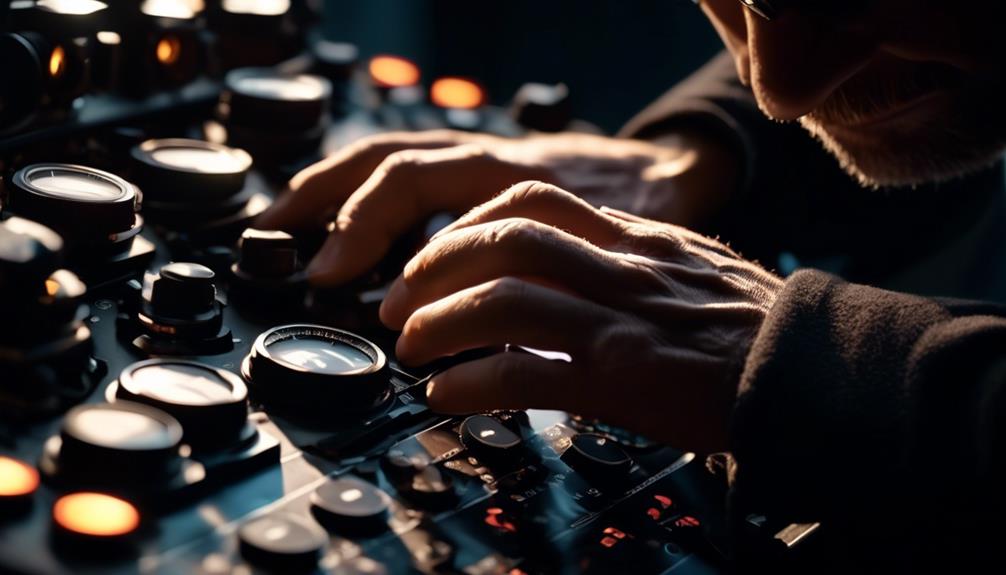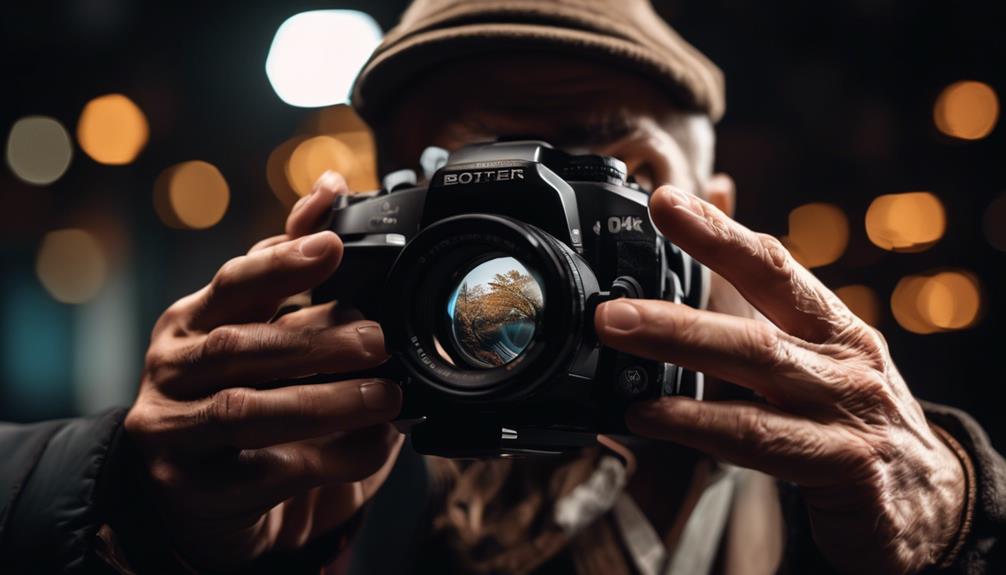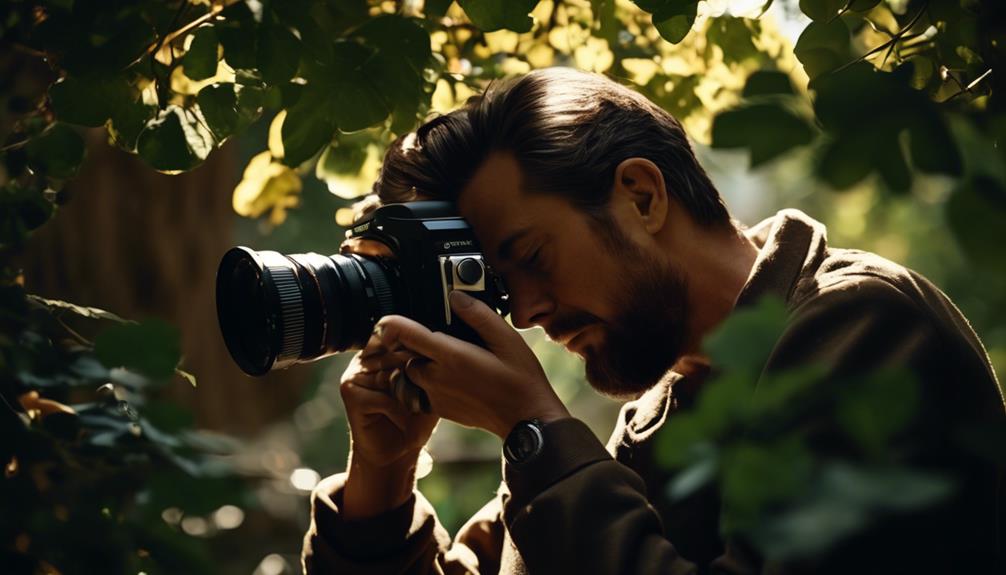Please note this post may contain affiliate links picked by me (Jay) that I have deemed may be of interest or relevant to you the reader of this.
These links do not affect the cost of the thing if you decide to purchase but i may get a little money if you choose to purchase.
For more information on my affiliate link policy click here.
As the sun dips below the horizon, casting a warm golden glow across the landscape, I stand there, camera in hand, capturing the beauty of the moment. It's in these instances, when nature's palette is at its most vibrant, that I truly appreciate the power of manual mode settings in photography.
With a simple twist of a dial, I have the ability to control the depth of field, freeze the motion of a waterfall, or even adjust the sensitivity to light. But understanding these settings can be daunting, and that's why I'm here to guide you through the intricacies of aperture, shutter speed, ISO, and white balance.
So, join me on this journey as we uncover the secrets to enhancing your photography one manual setting at a time.
Key Takeaways
- Understanding the basics of aperture, shutter speed, ISO, and white balance is crucial for achieving desired effects in photography.
- Aperture controls the depth of field in a photograph, with smaller f-stop numbers creating a shallow depth of field.
- Shutter speed determines the amount of motion blur in a photo, with fast shutter speeds freezing action and slow shutter speeds creating long exposure effects.
- ISO measures the sensitivity of the camera's sensor to light, with higher ISO values allowing for better exposure in low light conditions but also introducing more noise.
Understanding the Basics
Understanding the basics of manual mode settings is crucial for taking control of your camera and unleashing your creative potential. As a passionate photographer, I believe that mastering exposure is the key to capturing stunning images. By learning how to balance exposure settings, you can create photos that stand out from the crowd and showcase your unique perspective.
When it comes to exposure, there are three main components: aperture, shutter speed, and ISO. Aperture refers to the size of the opening in the lens through which light enters the camera. By adjusting the aperture, you can control the depth of field and determine how much of your subject is in focus. Shutter speed, on the other hand, determines the length of time the camera's sensor is exposed to light. It affects the motion blur in your images and allows you to freeze action or create a sense of movement. Lastly, ISO measures the sensitivity of your camera's sensor to light. Higher ISO values result in brighter images, but they also introduce more noise.
To balance exposure settings, you need to understand the relationship between these three factors. For example, if you increase the aperture, you may need to decrease the shutter speed or lower the ISO to maintain a correct exposure. By experimenting with different combinations, you can achieve the desired effect in your photographs.
Innovation in photography comes from pushing the boundaries and exploring new possibilities. By mastering exposure and balancing the settings in manual mode, you have the freedom to create images that truly reflect your vision. So, embrace the basics and embark on a journey of artistic discovery.
Aperture: Controlling Depth of Field
Now let's dive into the fascinating realm of aperture and how it allows you to control the depth of field in your photographs. Aperture is like the magical gateway that determines how much of your image is in sharp focus, creating stunning effects and captivating visuals. With the right aperture settings, you can achieve that beautiful bokeh photography where the subject is in sharp focus while the background melts away into a dreamy blur.
Here are three key points to keep in mind when it comes to aperture and controlling depth of field:
- Size Matters: Aperture is measured in f-stops, and the smaller the f-stop number, the larger the aperture opening. So, if you want to create a shallow depth of field with a blurry background, choose a small f-stop like f/1.8 or f/2.8. This will give you that creamy bokeh effect, making your subject pop.
- Focal Length Impact: The focal length of your lens also plays a role in controlling depth of field. As the focal length increases, the depth of field decreases. So, when using a longer focal length, like a telephoto lens, you can achieve a shallower depth of field even at higher f-stop numbers.
- Distance Matters Too: The distance between your subject and the background also affects the depth of field. The closer your subject is to the camera, the shallower the depth of field will be. So, experiment with different distances to create the desired effect.
Shutter Speed: Capturing Motion
To truly capture the essence of motion in your photographs, mastering the art of shutter speed is essential. Shutter speed refers to the length of time the camera's shutter remains open, allowing light to enter and capture an image. It's one of the three pillars of photography, along with aperture and ISO, that controls the exposure of your photos. But shutter speed goes beyond just exposure – it has the power to freeze action or create stunning long exposure effects.
When it comes to freezing action, a fast shutter speed is crucial. This allows you to capture a moment in time with sharpness and clarity, freezing even the fastest moving subjects. Whether it's a sprinter crossing the finish line, a bird soaring through the sky, or a child jumping in the air, a fast shutter speed ensures that every detail is captured without any motion blur.
On the other hand, long exposure photography is all about embracing motion. By using a slow shutter speed, usually measured in seconds or even minutes, you can create stunning effects such as silky smooth waterfalls, light trails from moving cars, or star trails in the night sky. This technique adds a sense of drama and dynamism to your photos, capturing the passage of time in a single frame.
Mastering shutter speed is about understanding how it can be used creatively to capture motion. Whether you want to freeze action or create long exposure effects, experimenting with different shutter speeds will allow you to push the boundaries of your photography and capture truly captivating images.
ISO: Managing Light Sensitivity
Managing the light sensitivity of your camera is a crucial aspect of photography, and ISO is the key to achieving the desired exposure in your images. ISO, or International Standards Organization, refers to the sensitivity of your camera's image sensor to light. By understanding and effectively managing ISO, you can capture stunning photographs even in low light conditions.
Here are three important things to know about ISO:
- ISO and Low Light: In low light situations, such as shooting at night or indoors, increasing your camera's ISO allows you to capture more light and produce well-exposed images. By raising the ISO, you can compensate for the lack of available light and avoid underexposed photos. This is especially useful when you can't use a flash or tripod, or when capturing fast-moving subjects in dimly lit environments.
- Noise Reduction: As you increase the ISO, you might notice the appearance of digital noise in your images. Noise manifests as grainy or speckled patterns that can diminish the overall quality of your photos. However, modern cameras are equipped with noise reduction algorithms that help minimize this unwanted effect. It's important to find the right balance between a higher ISO for better exposure and noise reduction to maintain image quality.
- Finding the Optimal ISO: Each camera has its own limits when it comes to ISO performance. Experimenting with different ISO settings will help you determine the highest ISO you can use without compromising image quality. Keep in mind that lower ISO values, such as 100 or 200, produce cleaner images with less noise. However, in low light situations, you may need to increase the ISO to achieve proper exposure.
Understanding ISO and its impact on light sensitivity is essential for taking exceptional photographs in various lighting conditions. By effectively managing ISO, you can capture stunning images even in challenging low light situations while minimizing noise for optimal image quality. So go out, push the boundaries, and embrace the innovative possibilities that ISO offers in your photography journey.
White Balance: Achieving Accurate Colors
Achieving accurate colors is a crucial component of capturing visually stunning photographs. Understanding white balance is the key to ensuring that your images reflect the true colors of your subject.
White balance refers to the adjustment of colors in your photograph to match the lighting conditions of the scene. It's essential because different light sources emit different colors, and if not adjusted properly, your images may appear too warm or cool.
To achieve accurate colors, you can customize presets on your camera. These presets are pre-determined settings that adjust the white balance based on common lighting conditions such as daylight, cloudy, or tungsten. However, sometimes these presets may not accurately capture the true colors of your subject.
In such cases, using color correction filters can help. These filters are placed over the lens and adjust the colors captured by the camera sensor, ensuring accurate color representation.
Customizing presets and using color correction filters allows you to have full control over the white balance of your images. By tweaking the settings based on the specific lighting conditions, you can enhance the colors and bring out the true essence of your subject.
It's important to experiment with different white balance settings to see which one best captures the colors you desire. Don't be afraid to step out of your comfort zone and try new techniques to achieve innovative results.
Frequently Asked Questions
How Can I Effectively Use the Manual Mode Settings to Capture Sharp Images?
To capture sharp images, I find that using manual mode settings for landscape photography is essential. By taking control of the aperture, shutter speed, and ISO, I can ensure that every element in my frame is in focus.
Some tips for achieving sharp focus in manual mode include using a small aperture for a large depth of field, using a tripod for stability, and manually adjusting the focus for maximum sharpness.
With these techniques, I can enhance my photography and capture breathtaking images.
What Are the Best Techniques for Using Manual Mode Settings in Low Light Situations?
In low light situations, using manual mode settings can be a game-changer for capturing stunning images. By adjusting the aperture, shutter speed, and ISO, you can effectively control the amount of light entering the camera and achieve the desired exposure.
Techniques like using a wider aperture, slowing down the shutter speed, and increasing the ISO can help you capture sharp and well-exposed photos in low light. These tips are essential not only in portrait photography but also in macro photography, where capturing intricate details is crucial.
Are There Any Specific Manual Mode Settings That Can Help Me Achieve a Bokeh Effect in My Photographs?
To achieve a beautiful bokeh effect in your photographs, it's important to understand aperture settings and use manual focus effectively.
By adjusting the aperture, you can control the depth of field and create a shallow focus, resulting in a dreamy and blurred background.
Combine this with precise manual focus to highlight your subject and create stunning bokeh.
Don't be afraid to experiment and play with different settings to achieve the perfect bokeh effect in your photos.
Can I Use Manual Mode Settings to Freeze Fast-Moving Subjects, Such as Sports or Wildlife Photography?
Using manual mode settings to capture fast-moving subjects, such as sports or wildlife photography, can greatly enhance the quality of your shots. By adjusting the shutter speed to a faster setting, you can freeze the action and capture every detail of the subject in motion. This allows for breathtaking shots that truly capture the intensity and energy of the moment.
To further enhance your photography skills, here are some tips for freezing action in photography.
Are There Any Manual Mode Settings That Can Help Me Capture Long Exposure Shots, Such as Light Trails or Starry Skies?
Yes, there are manual mode settings that can help you capture stunning long exposure shots, like light trails and starry skies. By adjusting the shutter speed, you can control how much light enters the camera over a longer period of time.
This allows you to capture the beautiful trails left by moving lights or the mesmerizing movement of the stars. Experimenting with different night photography techniques in manual mode will unlock a world of creativity and awe-inspiring images.
Conclusion
In conclusion, mastering manual mode settings is the key to unlocking the full potential of your photography. By understanding and adjusting aperture, shutter speed, ISO, and white balance, you have the power to create stunning images that capture the beauty of the world around you.
With practice and dedication, you can take control of your camera and elevate your photography to new heights. So grab your camera, set it to manual mode, and let your creativity soar. Happy shooting!


